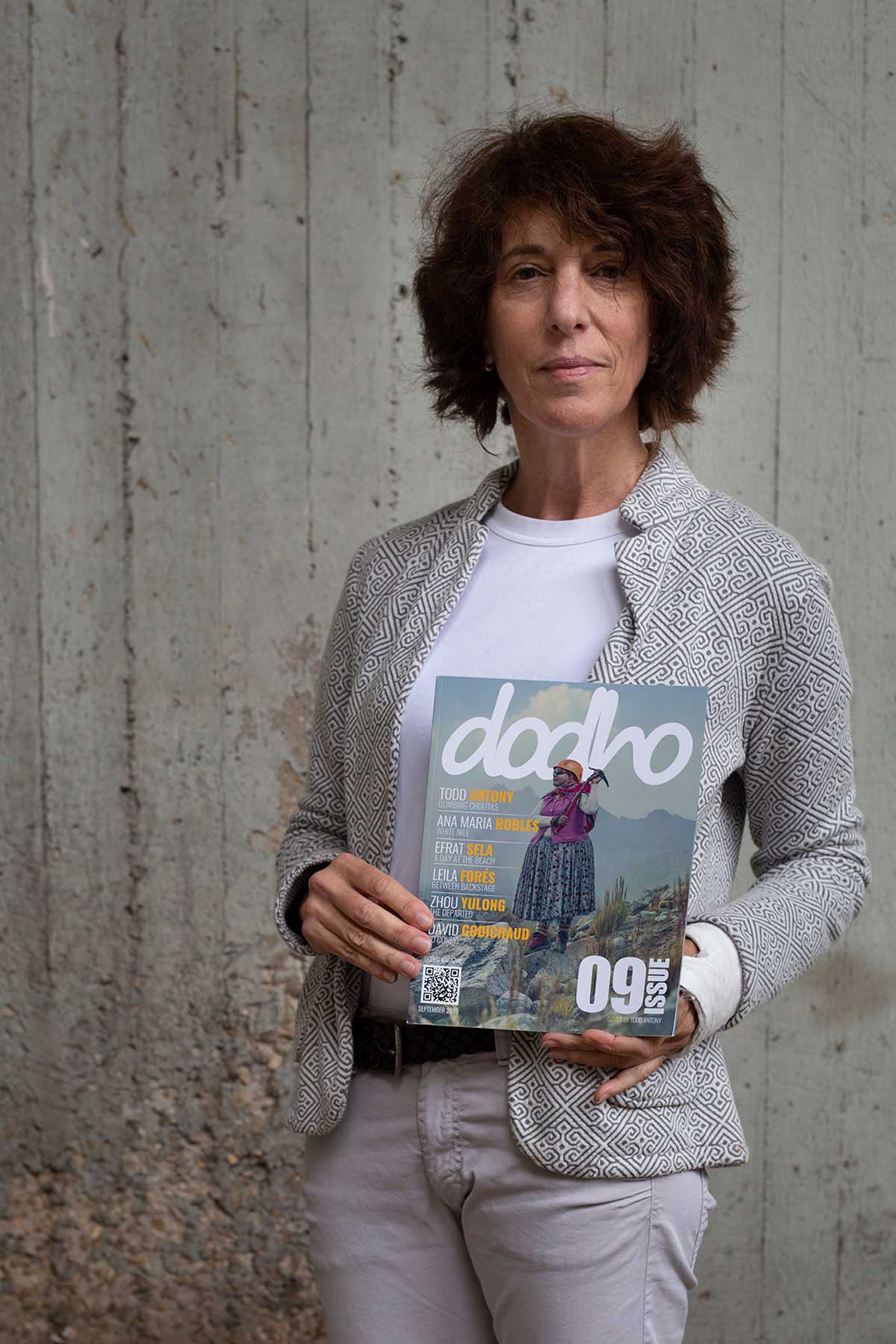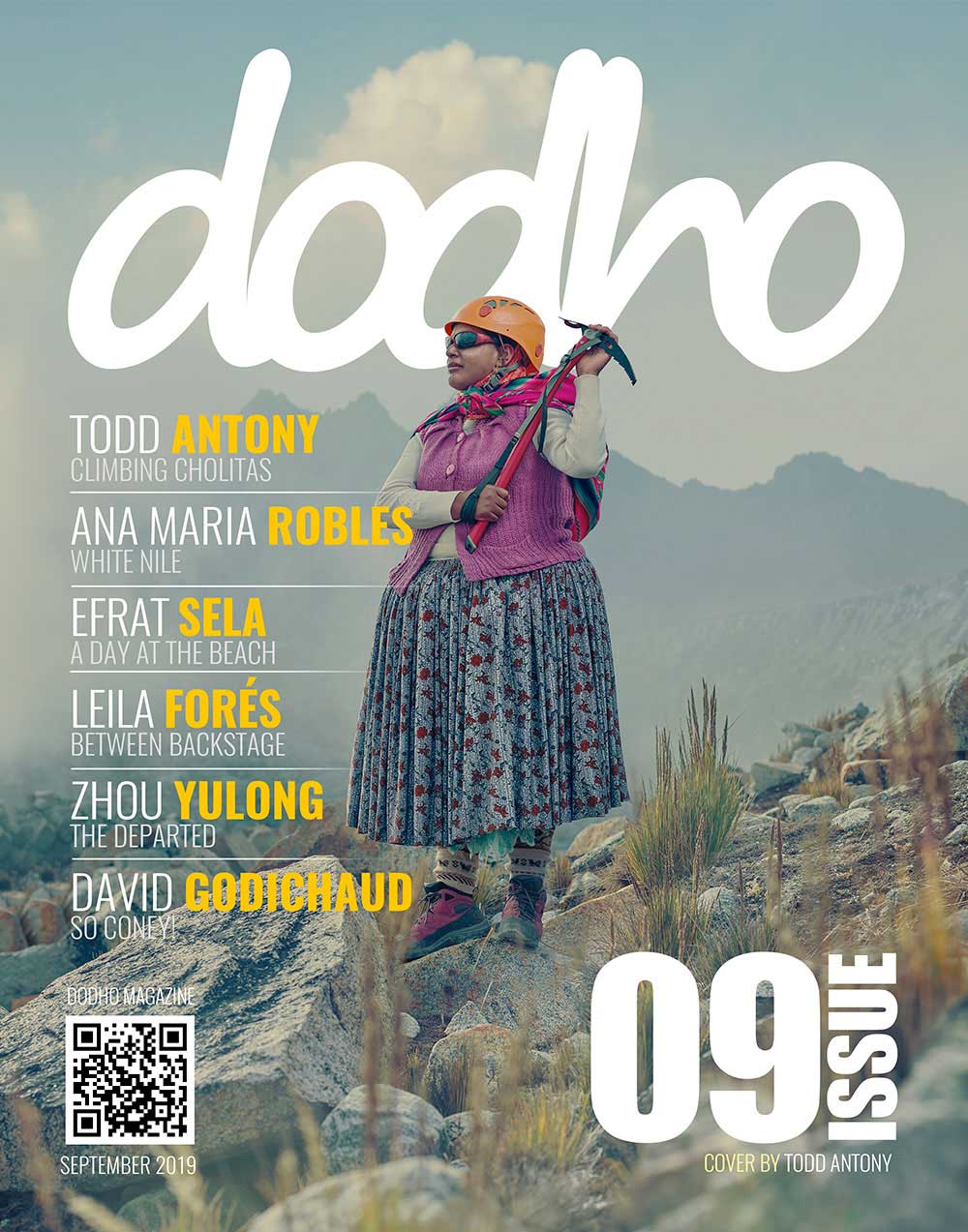 EFRAT SELA PUBLISHED IN OUR PRINT EDITION 09
EFRAT SELA PUBLISHED IN OUR PRINT EDITION 09
I born and live in Israel, I am a designer and photographer I experimented with art from an early age and the camera was one of the tools of expression I employed. While I studied design at the academy, the camera accompanied me in my search for ideas.
In recent years, I have focused on people, social issues and cultures, largely because of my own personal growth. I naturally combine my aesthetic sense and my interest in people in my photographs.
Today photography is a need, it come out from curiosity and an urge to dive deeper into what is happening around me, to touch the truth of life. Exit my comfort zone. To deal with difficult issues that strike me emotionally. I am part of a very political society, a melting pot of cultures, religions and opinions. I choose my documentary projects from an emotional place, from criticism, issues that I can’t stay Indifferent, in the other hand I like to flow with what happens on the street.
I am fascinated by the human experience in all its formats, looking for man’s interaction within society and culture. I look for stories, be it an individual or a group, captivated by different and unknown worlds. Through the lens, I investigate and study the place, its culture and people, I do street, culture and documentary photography.
This curiosity brings me to places that without my camera, I would not have ever been exposed to. The camera is the direct physical link between the eye and the soul, whereby photos reflect the reality from their point-of-view and at the same time tell a story about me and what I would not ever have seen, were it not within range of my lens. My photos deal with people and through them; I define and clarify my place in this world. [Official Website]

I’d like to begin by asking you about the activities that you stated happen during this gathering of people, and if these activities encompass both religions in a creative way. You specifically mentioned “Women’s discussions”, and I am curious to know if you were at one point invited to be part of any of these discussions?
I would not define this as a religious encounter; I would define it as a meeting between cultures, between different societies. Unfortunately, I have not yet been part of a women’s talk after the beach activity. I hope next year I will, but each session ends with one of the women who participated telling the rest of us about it, and so we all, through her stories, experience it too. The women’s discussion session is designed to give the opportunity speak and listen, to ask questions and exchange opinions. Professional women discussion facilitators lead the meeting and create a special and exciting experience for everyone.

You stated that the women of the sea or ‘Min El Bahar’ “work very hard to get the necessary permits for a fun day at the Tel-Aviv beaches”. I am interested as to what kind of restrictions or laws this association has to abide by in order to get these permits?
Residents of Judea-Samaria and Gaza are not allowed to cross the border without a permit such as a work, medical, legal or special permit. The permits are obtained from the “Civil Administration” and the army, after individual security checks. For each day at the beach, to host just one bus and trying to fill it to capacity, requires working with multiple families and obtaining the permits for each individual participant, which takes a lot of effort by the organizers and cooperation from all the relevant parties.
The project itself is a beautifully honest representation of a gathering of two communities. Do you believe that this is made possible due to the symbolic nature of the sea, something which washes away any and all troubles and re-introduces the innocence of life?
Yes, it is amazing to see how the “border” melts in the water. “Women of the sea” eagerly anticipate those meeting, waiting with open hands. The families, most of them visiting the sea for the first time, feel the warm hospitality and emotional barriers fall very quickly. I assume the beach is a perfect atmosphere to deal with the complexity of relationships. In addition, year by year, the activity is growing, more people are volunteering and more Palestinians are visiting, which is the best sign.
I found one particular photograph relatively interesting when viewing this series. The image depicts a woman dressed in blue with her arms up in the air, while others around her look as if they are rejoicing. Were there any activities that highlighted singing or prayer that took part in the water itself?
Each group dynamic is different. However, every time it’s very happy occasion. Most of the time there is singing, dancing, and drumming on Durbuca, women empowering each other. In that image, with a group of women standing in a circle in the water, it was very natural for her to raise her hands and to pray that this moment will be our everyday reality. There is no specific religious ritual underlying it.

This project is obviously a personal investigation about the coming together of two neighbouring countries. As you eloquently put: “A meeting against the backdrop of decades of conflict managed by politicians who do not bring solutions and sometimes the opposite”. Do you believe that this project will reach the hearts of people within these two communities, outside of the beach and also aspire more people to come together in a positive way?
I am sure that activities like these will reach hearts. Both sides hear the other’s story. Often it is a different story than what we have heard before. I think, and hope that all the kids feel the good will and will think differently about each other after this day and they will think about peace. The situation is very complicated. These activities are not a solution, and we know it is only a drop in the water of a peace movement.
Due to the fact that this project clearly represents the value of community and love, were there any specific shared meals or gatherings that incorporated a large group of people from both cultures?
Some new connections are formed, and we invite the other side to keep in touch, but, as I described, it is not easy to cross the border. Israelis can visit the West Bank under strict military warnings not to do so and understanding that they travel at their own risk. Sometimes, to celebrate the end of the summer, there is a big “Hafflah” means a big party with food, music and dancing. People from both sides are invited and it is happy cultural evening.

Francesco Scalici
A recent MA graduate from the University of Lincoln, Francesco has now focused on landscape photography as the basis of his photographic platform. An author for DODHO magazine, Francesco’s interest in documentary photography has turned to writing and has had various articles, interviews and book reviews published on platforms such as: ‘All About Photo.com’, ‘Float Magazine’ and ‘Life Framer Magazine’. Currently on a photographic internship, Francesco has most recently been involved in the making of a short film titled: ‘No One Else’, directed by Pedro Sanchez Román and produced my Martin Nuza.







